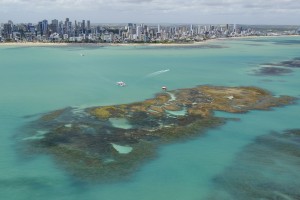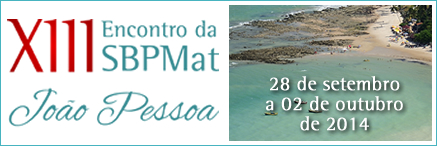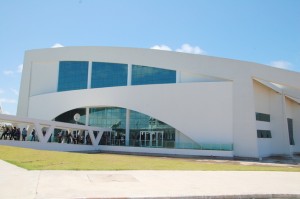
About 1,650 people connected to research in Materials Science and Engineering and other related fields were at the “Poeta Ronaldo Cunha Lima” Convention Center, in the city of João Pessoa (State of Paraíba), between September 28th and October 2nd, participating in the intense program of the 13th Meeting of the Brazilian Materials Research Society (SBPMat).
The number of attendees at this year’s annual event represented an increase of approximately 15% in comparison to the previous edition. Maintaining its international nature, the event featured entries from 20 countries of the most diverse regions of the planet, with a predominance of researchers from South America and Europe. Within Brazil, the five regions of the country were represented, with attendees from 23 states of the country, among the existing 27.
The opening
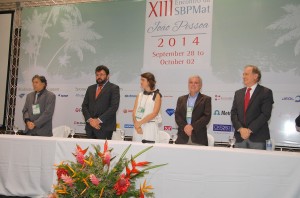
It was already nighttime in the city of João Pessoa on Sunday, September 28, when Professor Roberto Faria, President of SBPMat, formally opened the event. “The meeting is opened”, he declared facing the nearly 1,200 people gathered in the plenary room of the convention center. In addition to Professor Faria, the opening panel was composed by the chairs of the event, Professor Iêda Maria Garcia dos Santos and Severino Jackson Guedes Lima, both from the Federal University of Paraíba; the President of the Paraíba Research Foundation (FAPESQ-PB), Professor Claudio Benedito Silva Furtado, and the CEO of the São Paulo Research Foundation (FAPESP), José Arana Varela.
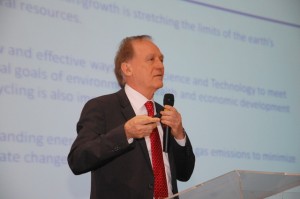
After the opening ceremony, Professor Arana Varela delivered the Memorial Lecture “Joaquim Costa Ribeiro”, which is a distinction bestowed annually by SBPMat on a Brazilian researcher with an outstanding career in the field of Materials. The chosen scientist receives a plaque and presents a lecture at the beginning of the annual meeting of the society. The memorial lecture also pays homage, through its name, to one of the first Brazilian researchers who dedicated themselves to studying materials, engineer Joaquim Costa Ribeiro (1906 – 1960).
Among various subjects connected to the evolution of Materials Science, such as the creation of several scientific societies in the world in the field of materials, Arana Varela presented data about the quantity and impact of the articles published by Brazilian authors in Materials Science. The graphics caught the attention of the public to show that, until the late 1990s, annual production in the field was below 400 articles, but exceeds 1,000 since 2012. By analyzing the relative impact of these publications, Arana Varela showed that Brazil has traveled a path not so constant, and that currently does not go through its best moment. “Now the challenge is to raise the international impact of the research conducted in Brazil,” said the lecturer
Right after the lecture, the participants went to the foyer area and the VIP room, where they enjoyed the opening cocktail. In a celebratory mood, meetings occurred in several languages and with different accents, probably leading to new collaborations, ideas and friendships by the end of the event.
About 2,000 works presented
Starting on Monday, plenary lectures by internationally renowned scientists opened up the morning and afternoon periods, followed by presentations of the accepted papers in the 19 thematic simultaneous symposia.
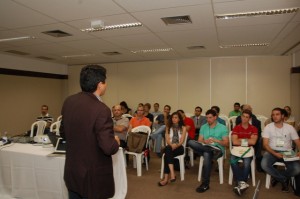
In addition to 105 invited lectures given by scientists from Brazil and several other countries, about 2,000 works, including oral presentations and posters, were presented and discussed at the symposia. This “universe” included topics such as organic electronics, materials for nanomedicine, hybrid interfaces, surfaces and coatings, chemical methods, sol-gel processes, magnetic materials, luminescent materials, graphene, carbon, electroceramics, advanced metals, anti-fouling materials, clays, cementitious materials, computational simulations, energy storage systems and technology transfer.
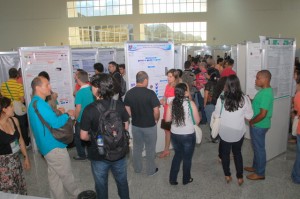
The symposia at SBPMat meetings are selected from proposals that can be submitted to the event committee by any scientist from anywhere in the world. This edition of the event registered coordinators of symposia linked to universities, research institutes and companies, such as Petrobras, from the Southern, Southeastern and Northeastern regions of Brazil, as well as Argentina, France, Germany, Spain, Sweden, United Kingdom and USA.
On the last day of the event, during the closing ceremony, the winners of the Bernhard Gross Award were announced. The award is granted by SBPMat to the best works of each symposium presented by undergraduate or graduate students, which represented 67% of the total attendees in this year’s meeting. The award honors another pioneer researcher in the field of Materials in Brazil, the engineer and physicist Bernhard Gross (1905 – 2002). This year, twenty young scientists received the distinction for their works, conducted within their master’s, doctoral or undergraduate researches in Brazilian universities.
A varied schedule
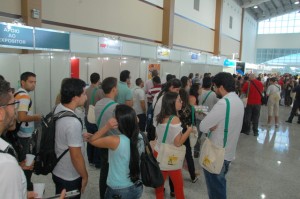
During the coffee breaks, it was hard to walk through the foyer, crowded with participants that, with coffee and a muffin or a sandwich in hand, visited the stands of the 30 exhibitors that were disclosing their scientific instruments, techniques, materials, services, projects and publications.
Those interested in learning more about Shimadzu/Tescan’s SEM with TOF SIMS detector, or about Sample Preparation with DualBeam™ and MET analysis by FEI had the opportunity to attend, right after a quick lunch and before the afternoon’s plenaries, the technical lectures of these companies, sponsors of the meeting.
This SBPMat meeting was also the stage for the disclosure of two important actions undertaken in the context of the society during 2014. The first one was the creation of four units of SPBMat’s University Chapters Programme in the states of Minas Gerais, Piauí and São Paulo. This program, intended for undergraduate and graduate students, gathered for the first time at the meeting held in João Pessoa. The second disclosure concerned the release of a document produced by the Institute of Physics (IOP) for SBPMat about Materials Science in Brazil, which was distributed firsthand to each of the participants of the 13th Meeting.
Time to wrap it up…
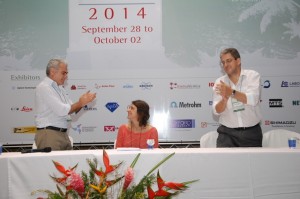
Following the ceremony of the Bernhard Gross Award, the time to close formally SBPMat’s 13th Meeting had come. Chairlady Iêda Garcia dos Santos presented a few of the event’s numbers and went to the acknowledgements: she thanked the participants, the organizing team, the volunteers from universities from the states of Paraíba and Rio Grande do Norte that helped in the organization, the committees, symposium coordinators, speakers, sponsors, supporters and exhibitors. At that moment, SBPMat’s President, Roberto Faria, spoke, expressing his gratitude to the coordinators of the event.
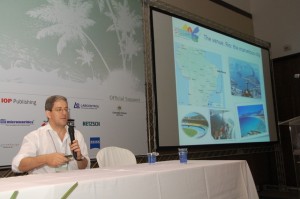
To finish it all, Professor Marco Cremona, coordinator of the society’s next event, announced that the XIV SBPMat Meeting would be held in Rio de Janeiro, from September 27 to October 1 2015, at the SulAmérica Convention Center – a space easily and quickly accessible from any neighborhood of the “Wonderful City”.
With the double joy of taking part in a beautiful event, and the perspective of a reunion in twelve months, the participants, organizers and speakers that were still at the convention center socialized around a series of regional delicacies that left a taste of sea in the mouth, perhaps intensifying the desire of many to spend this afternoon on the beautiful beaches of Paraíba.

